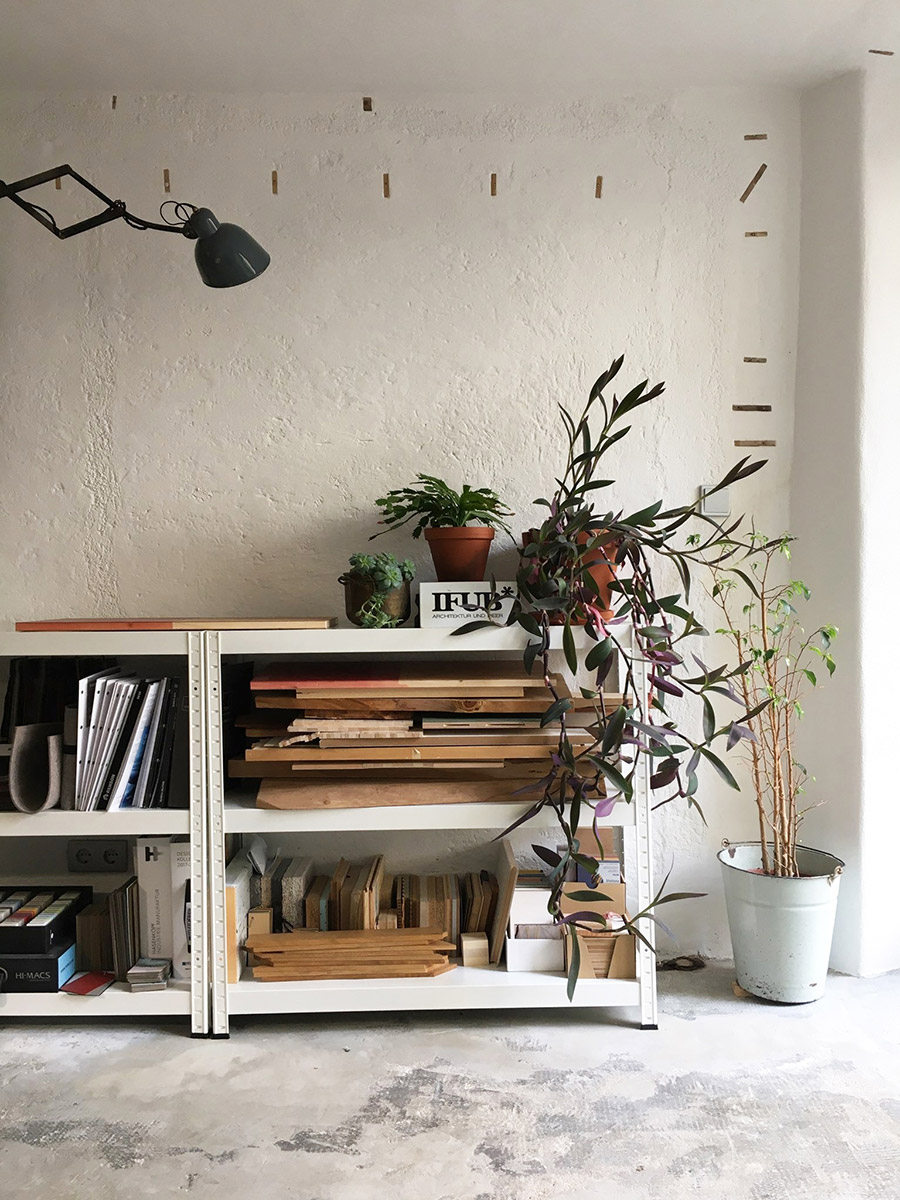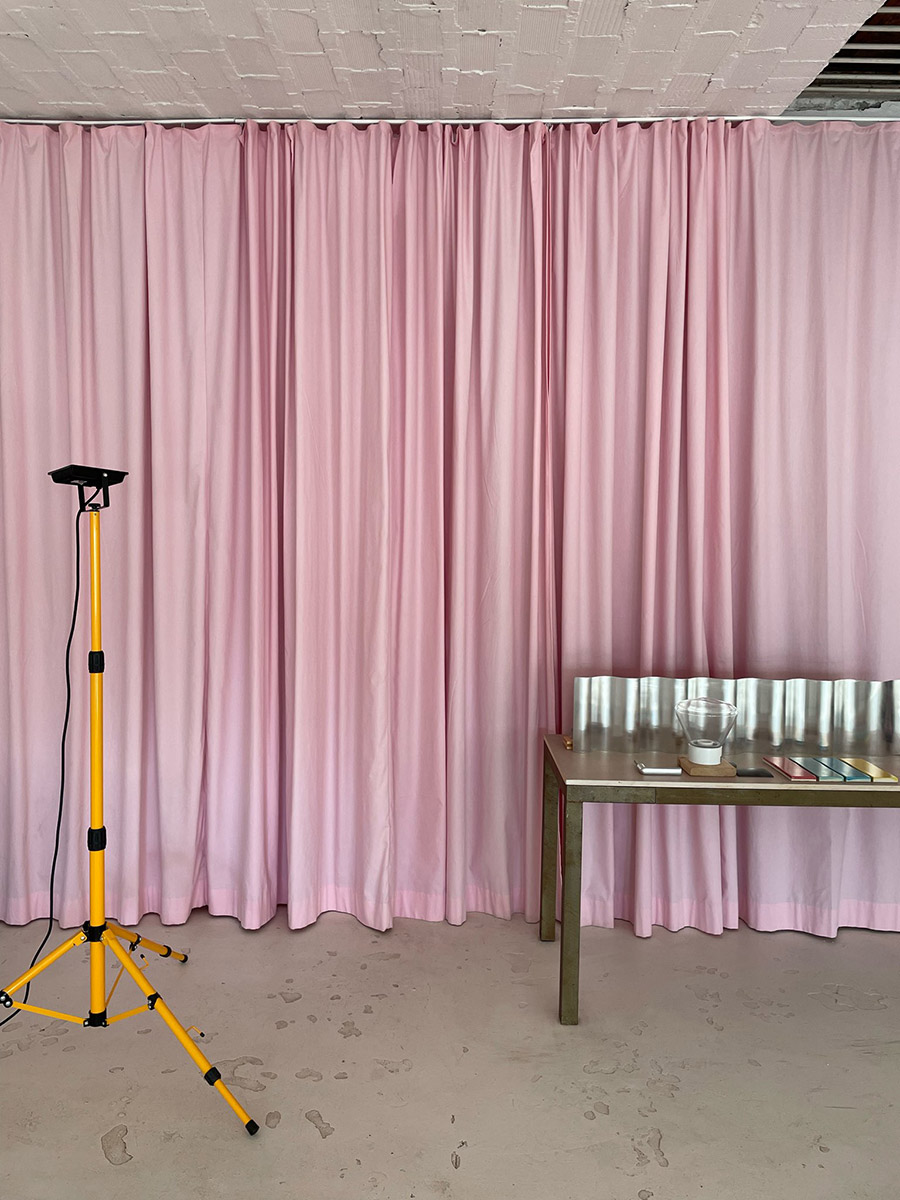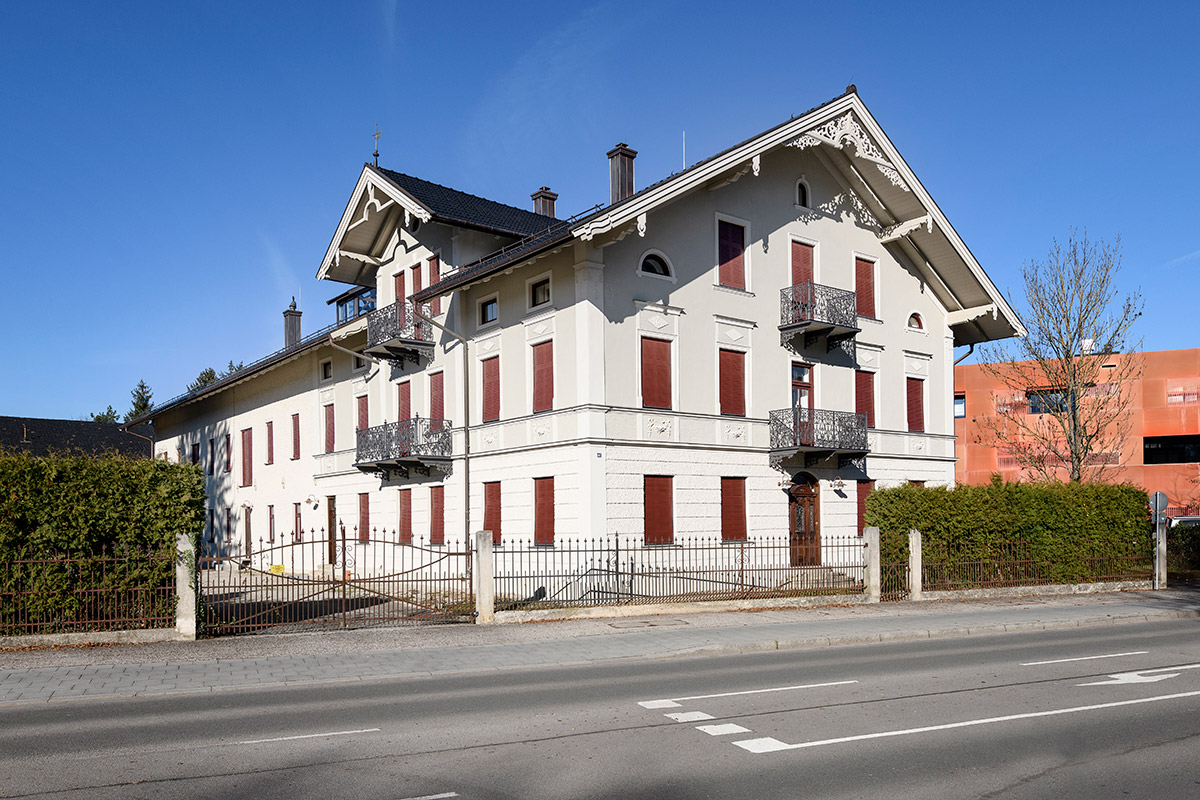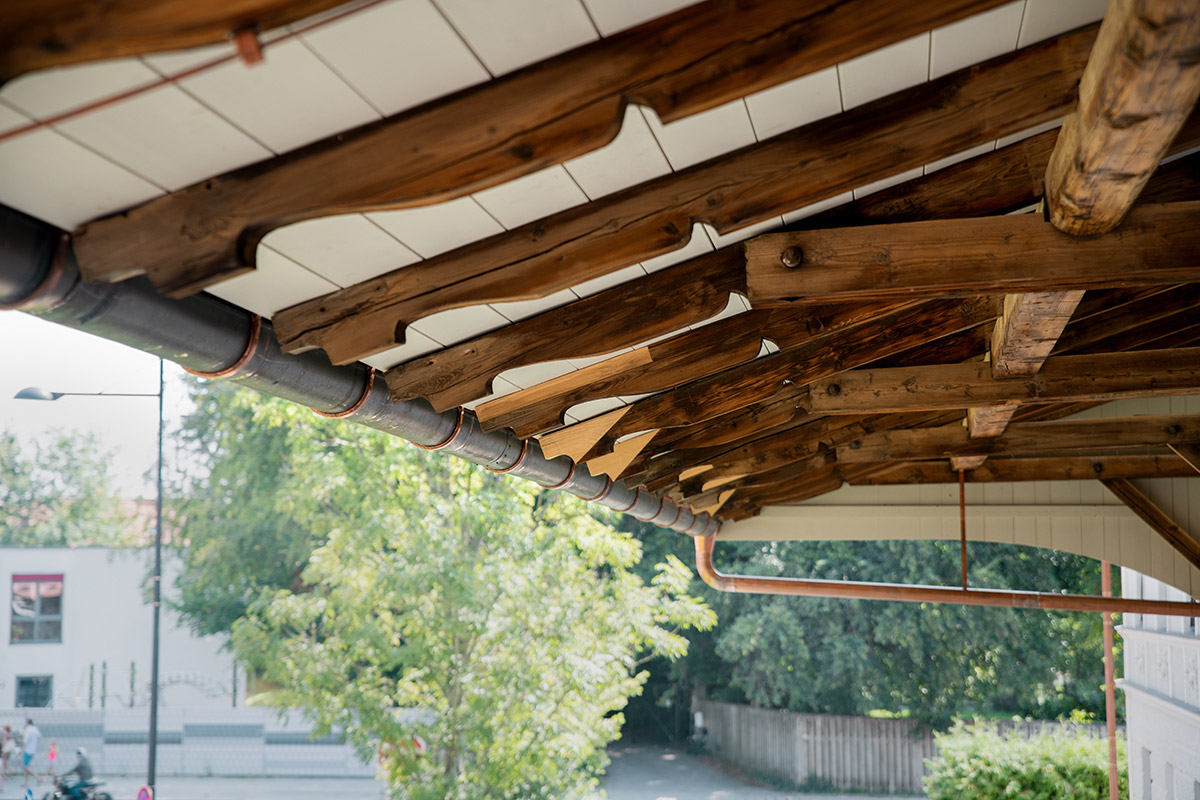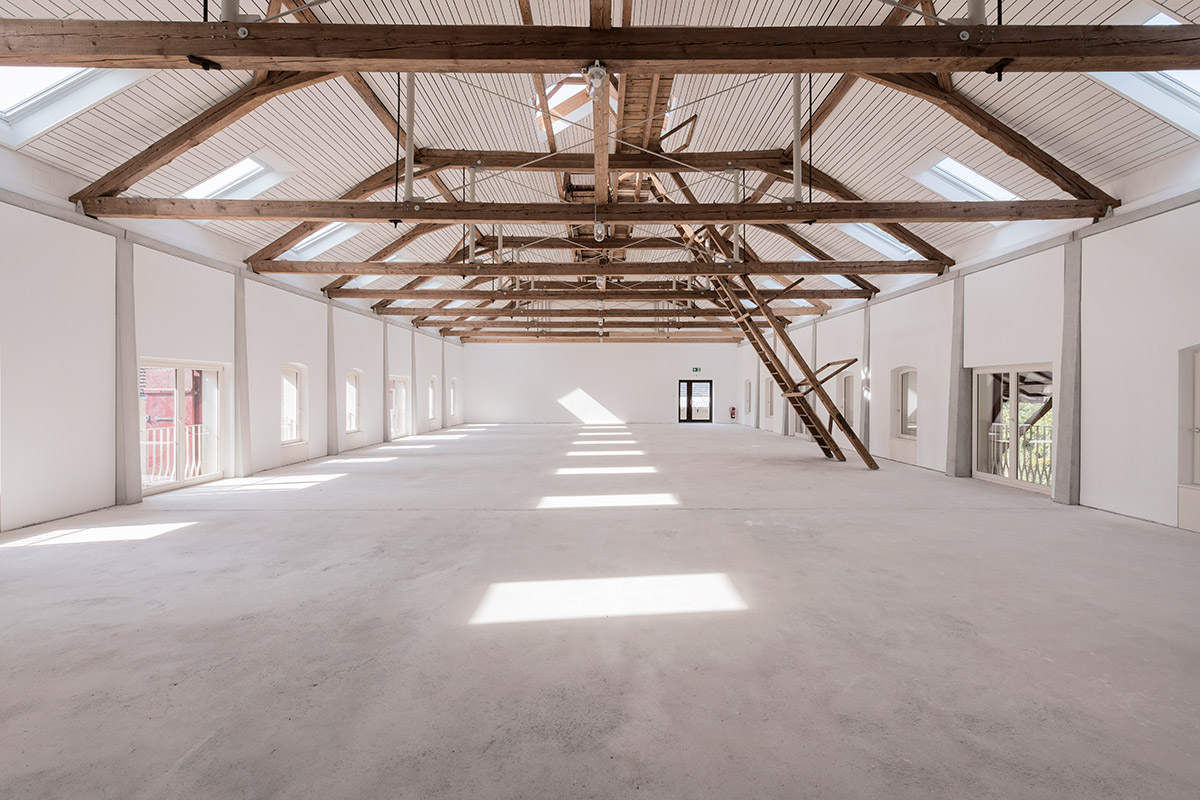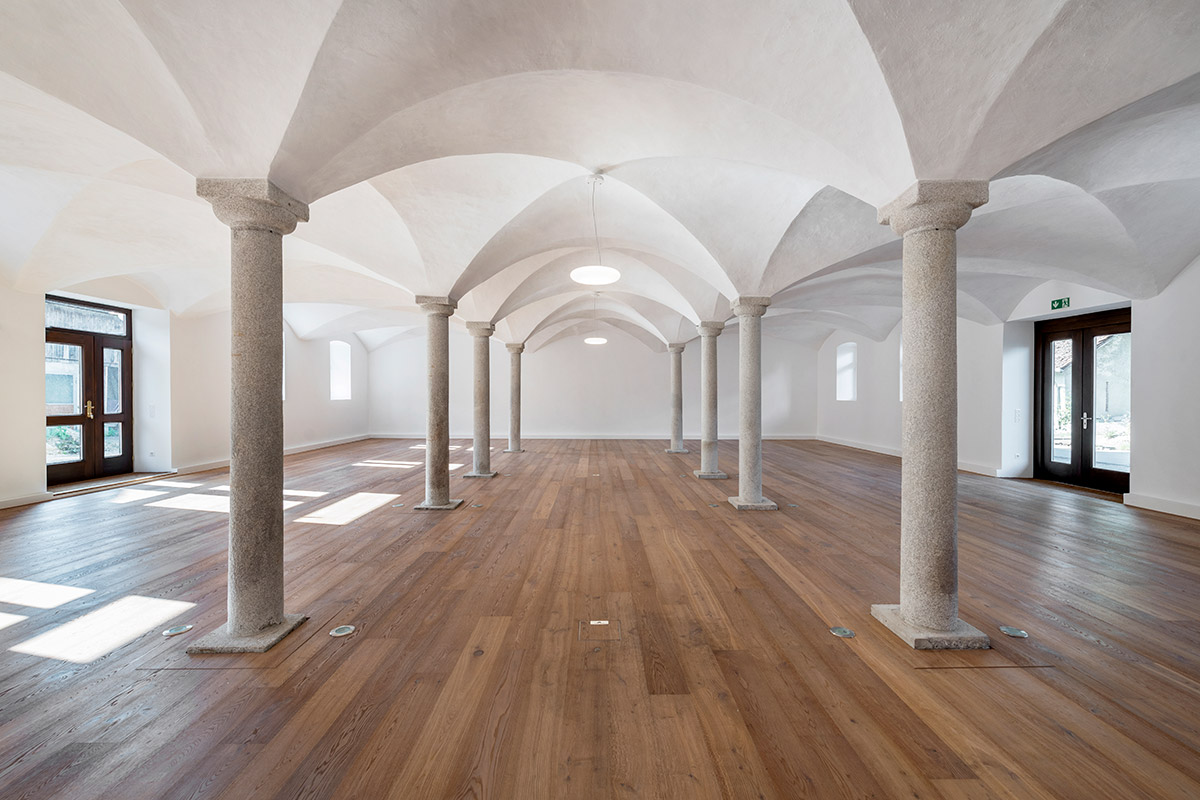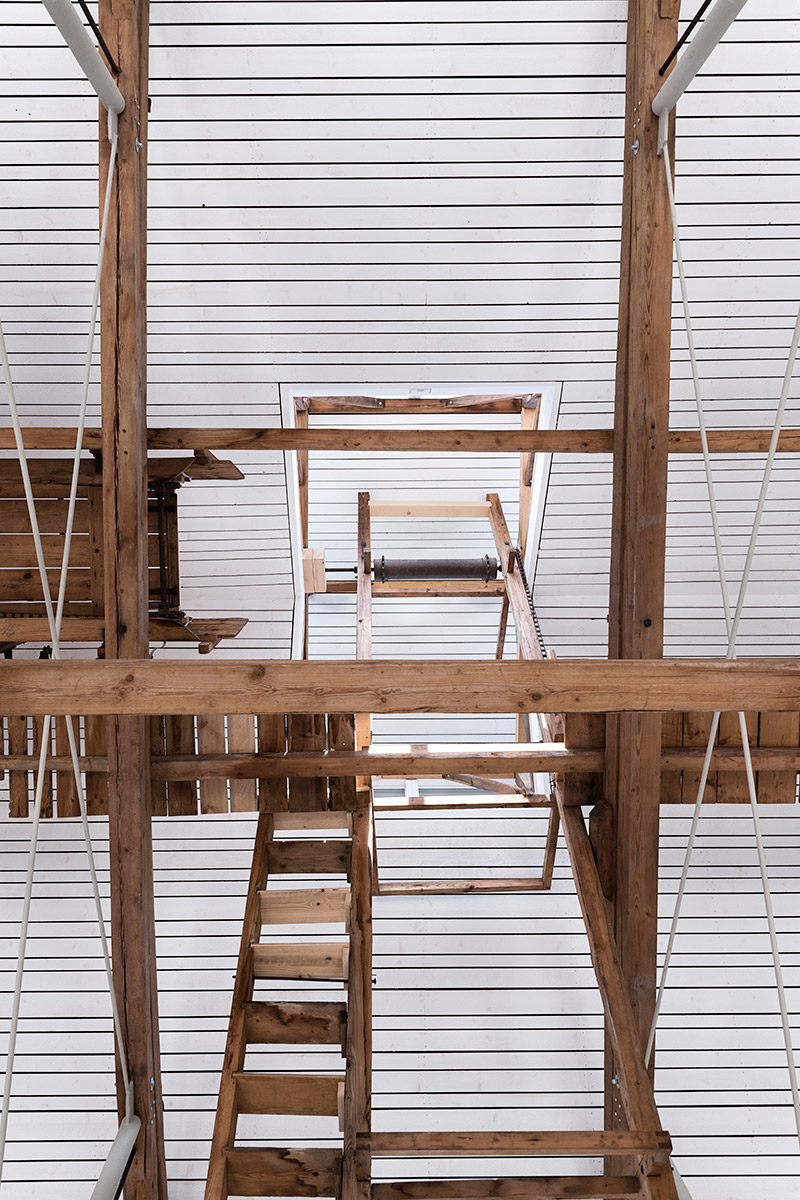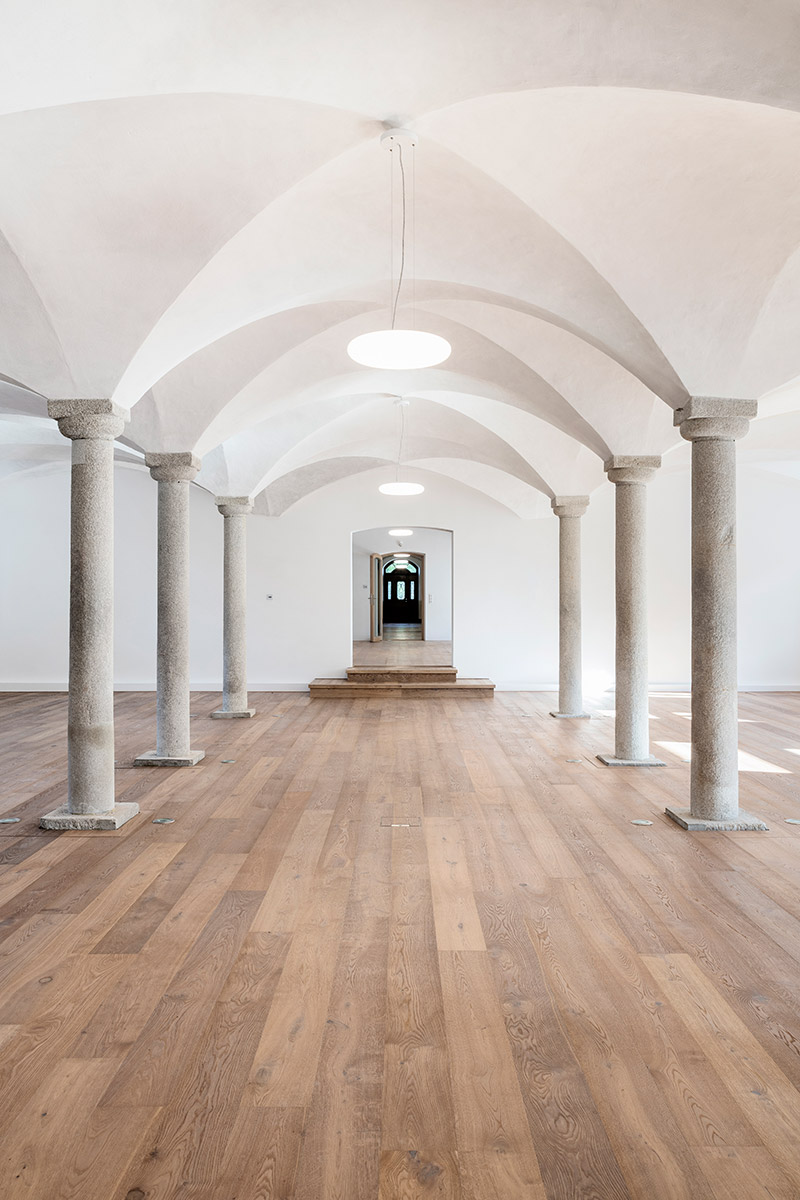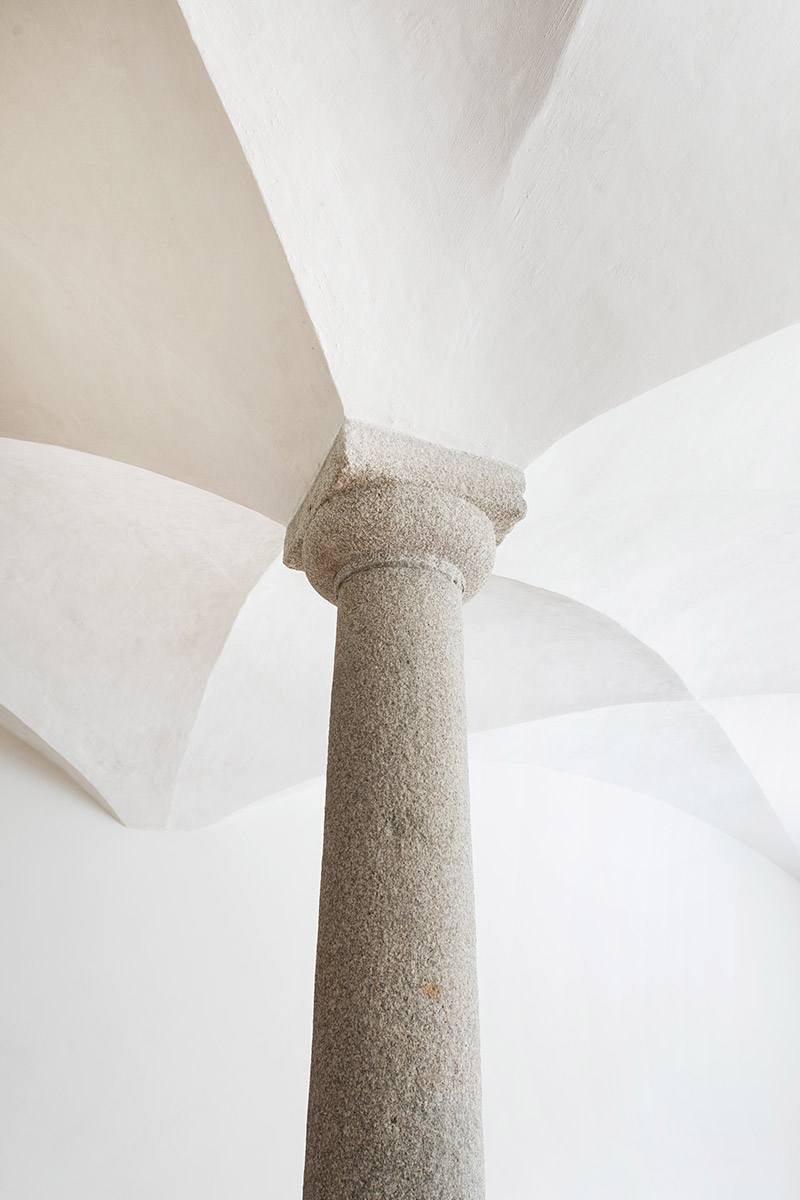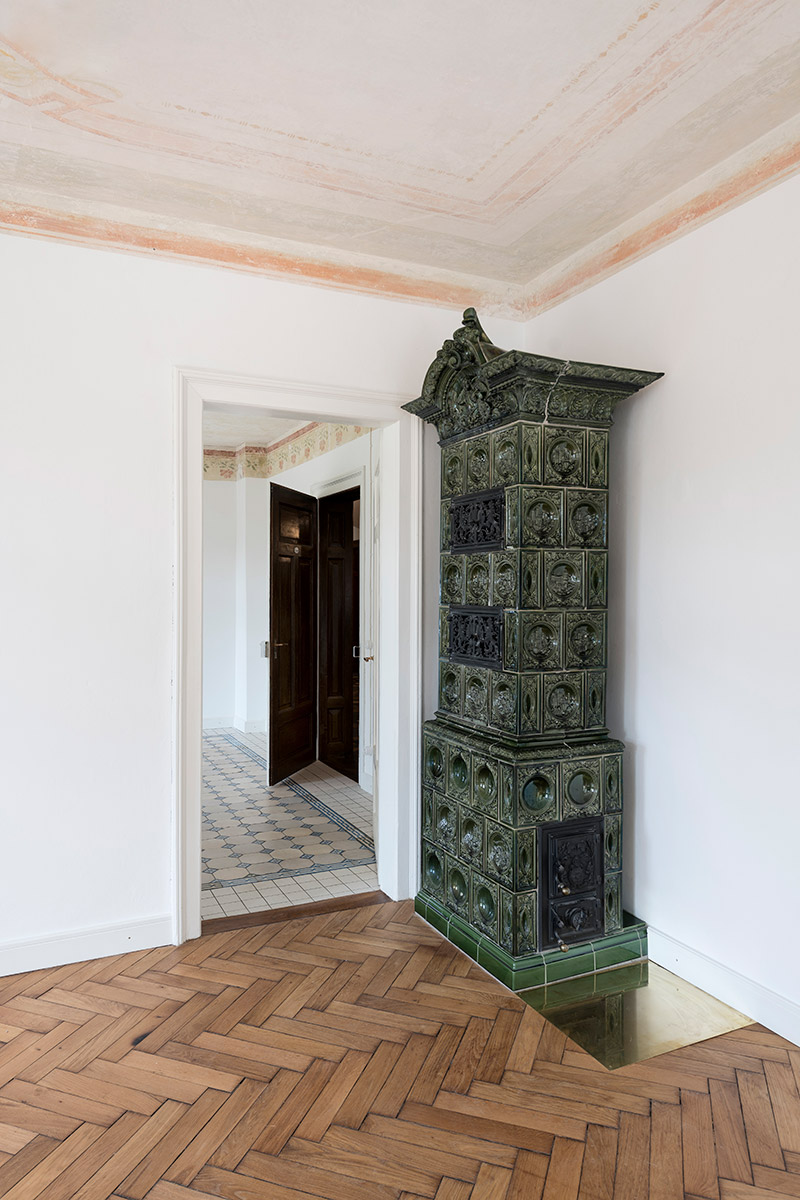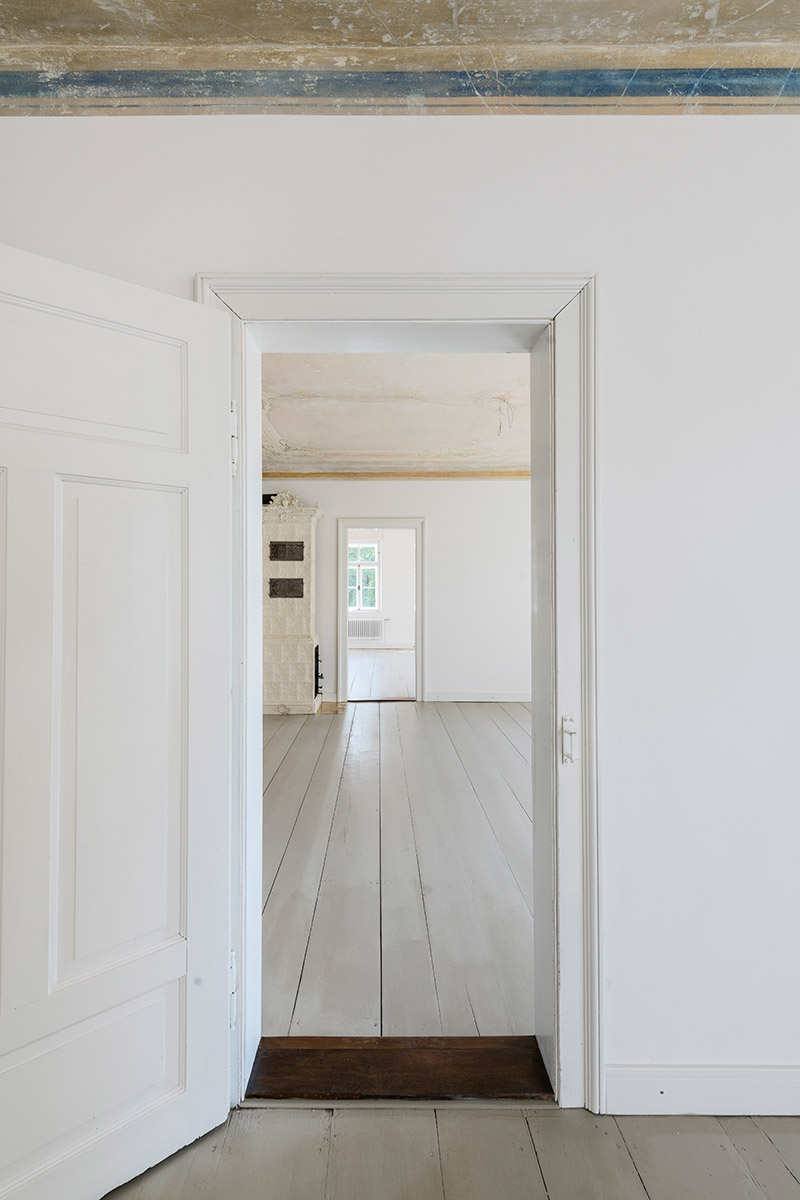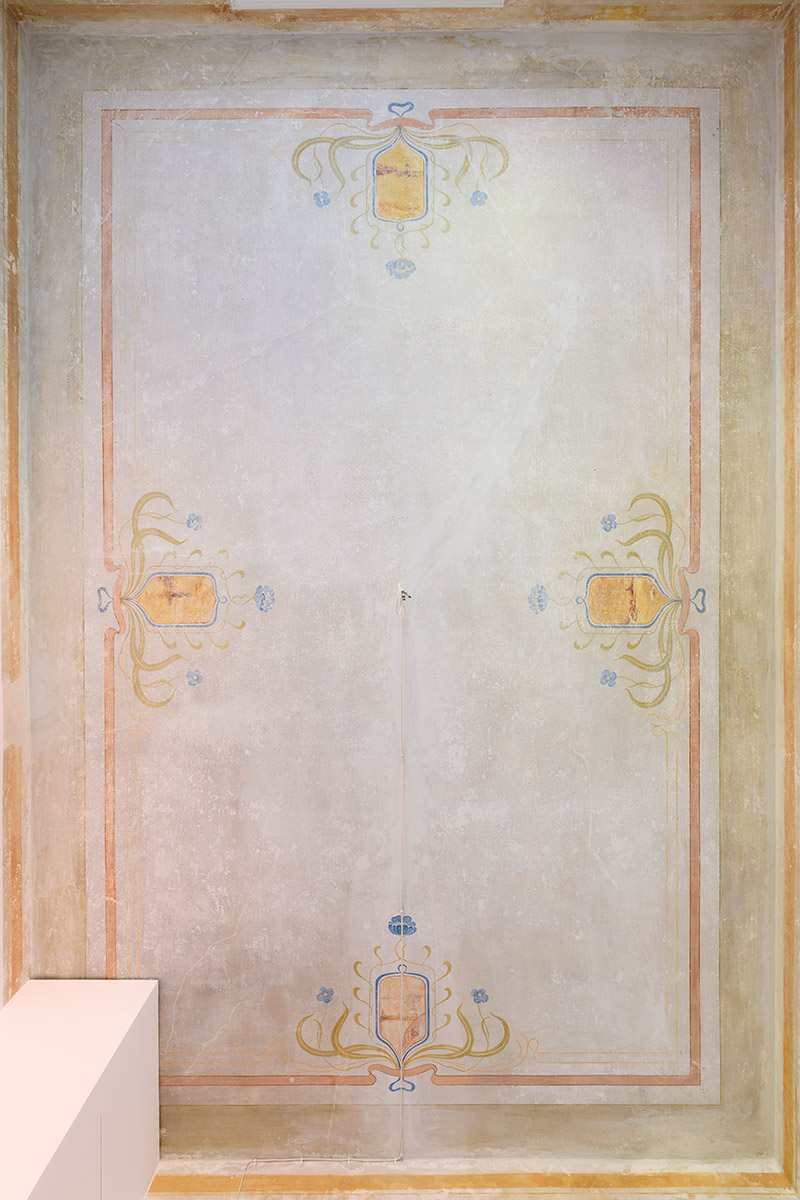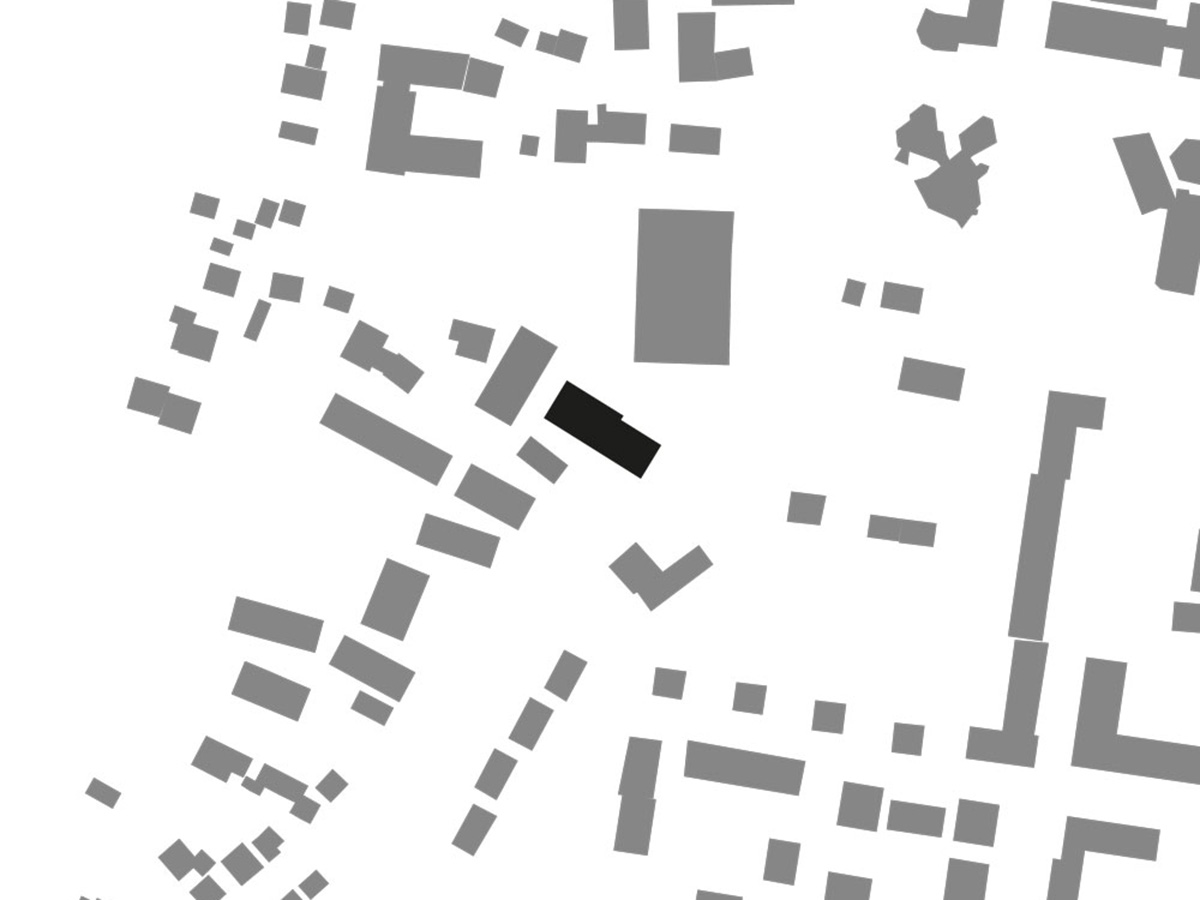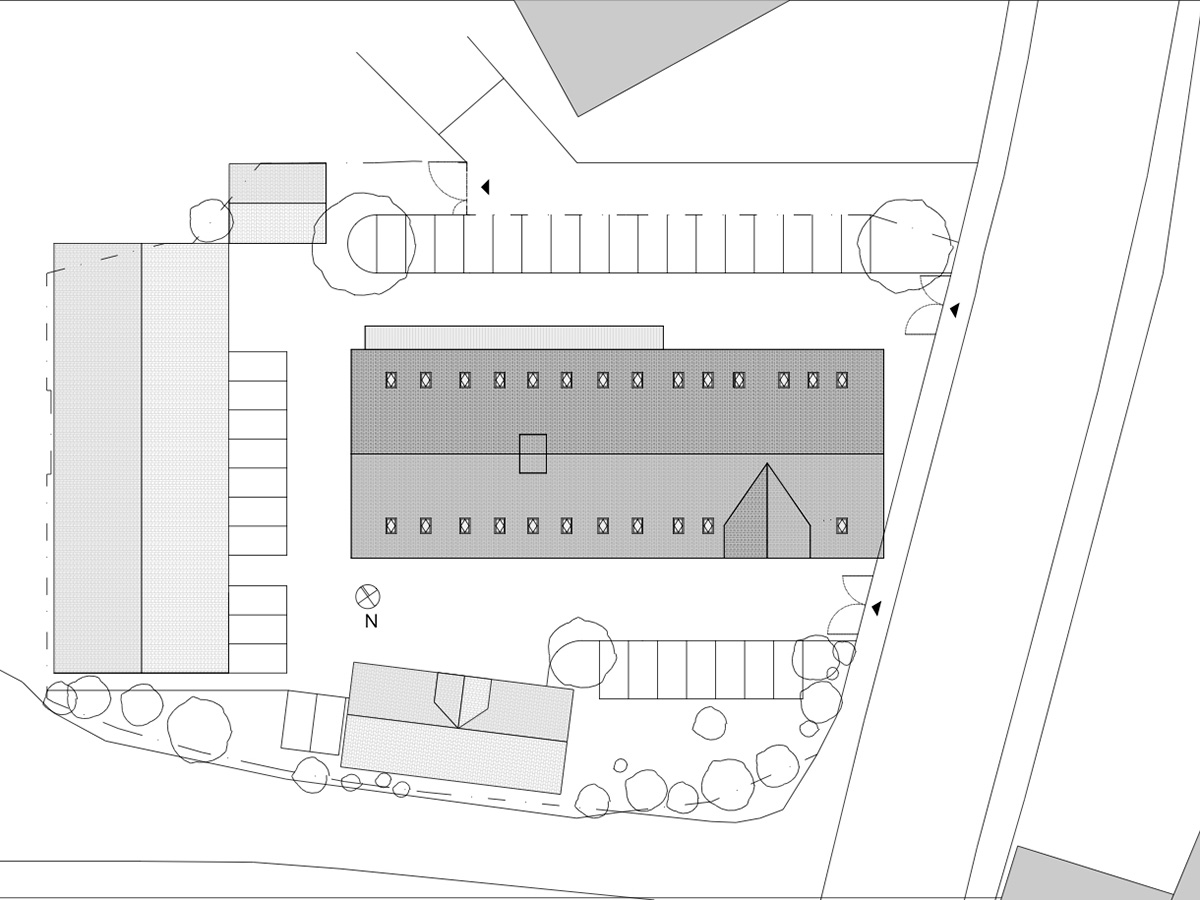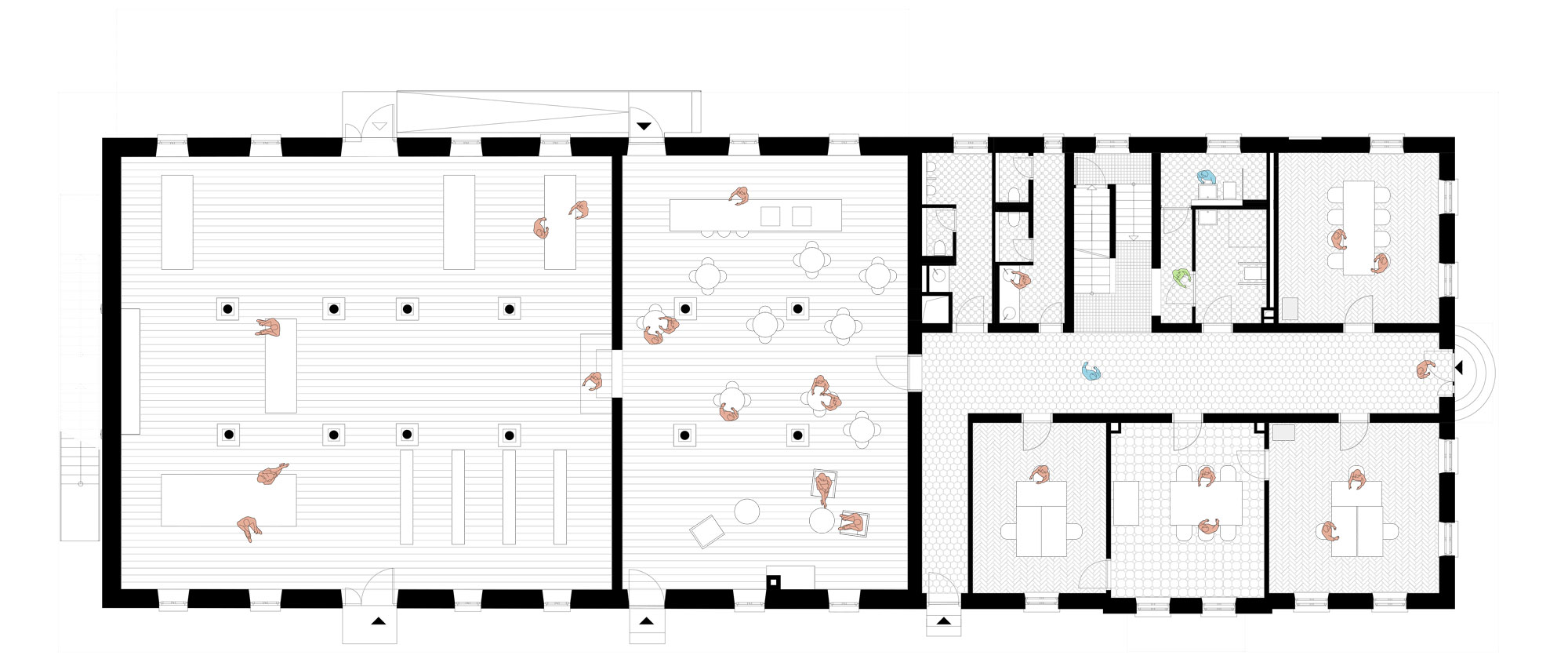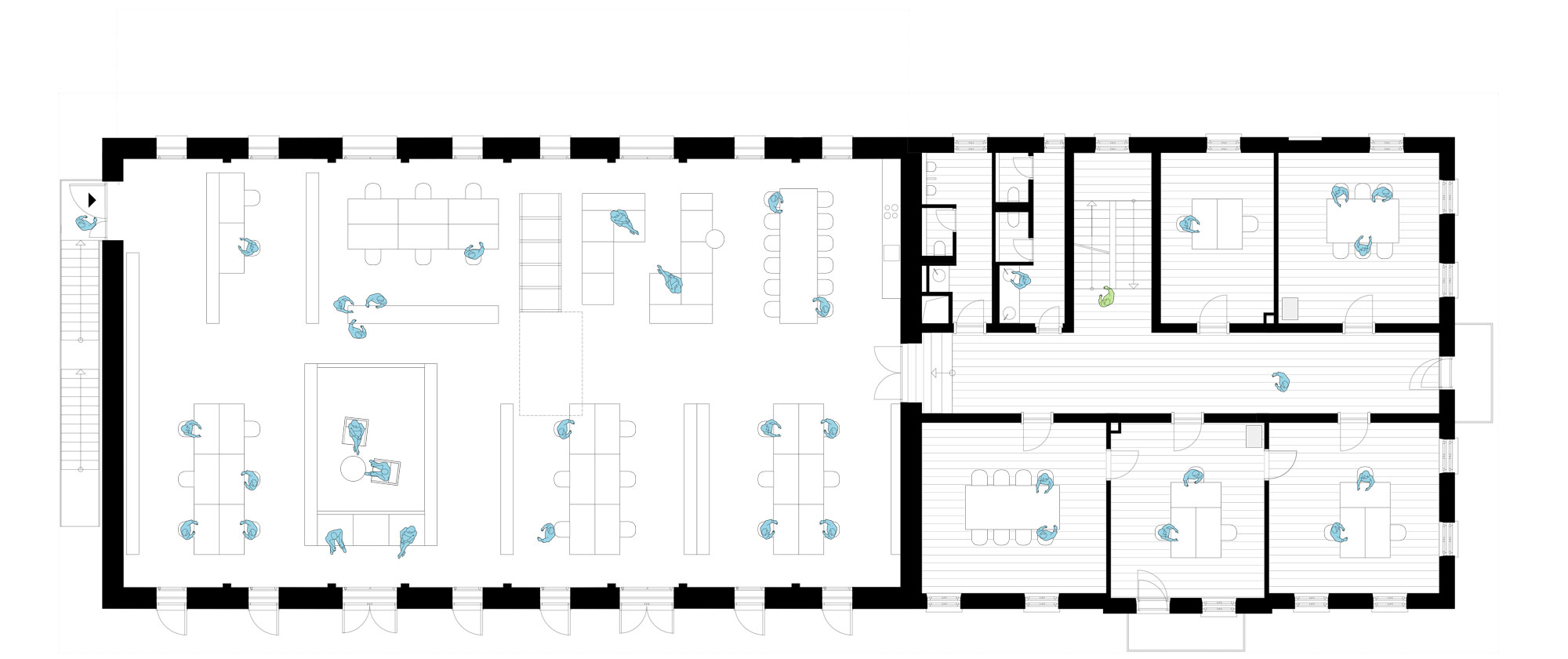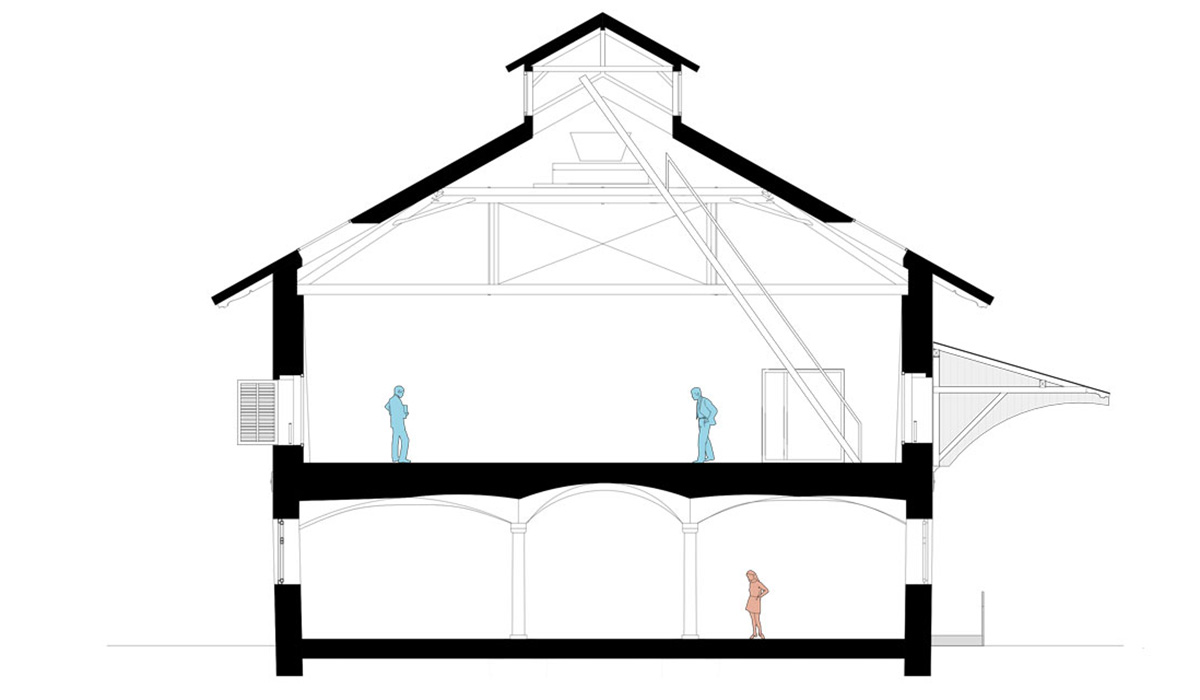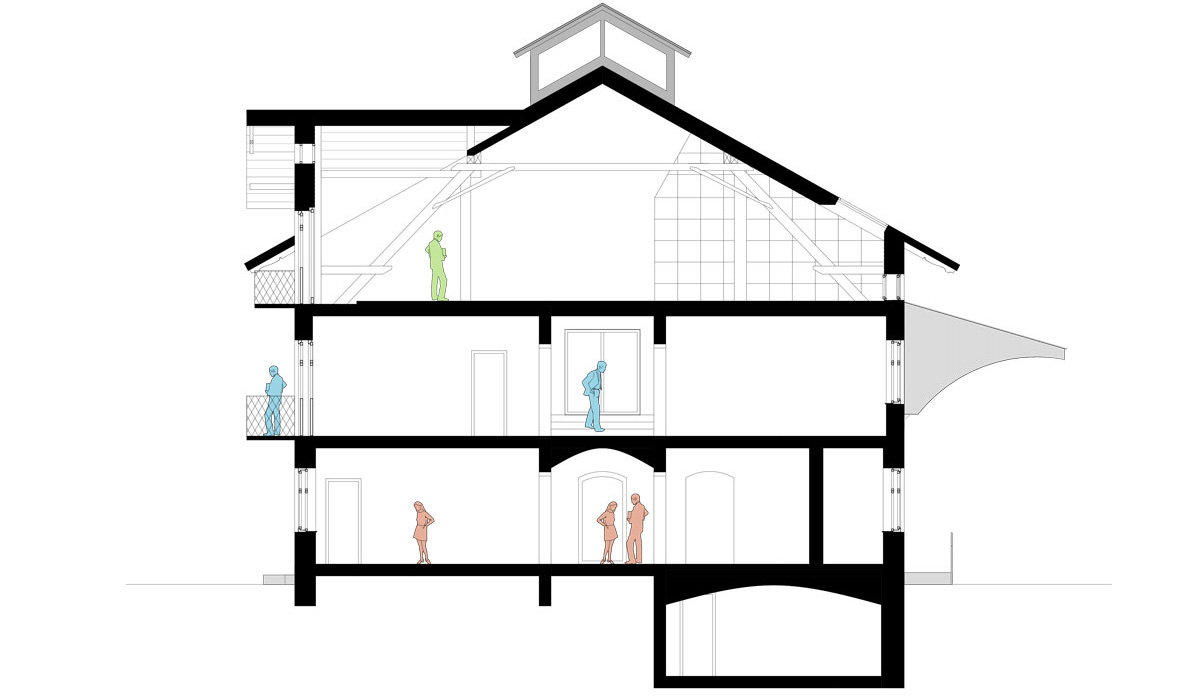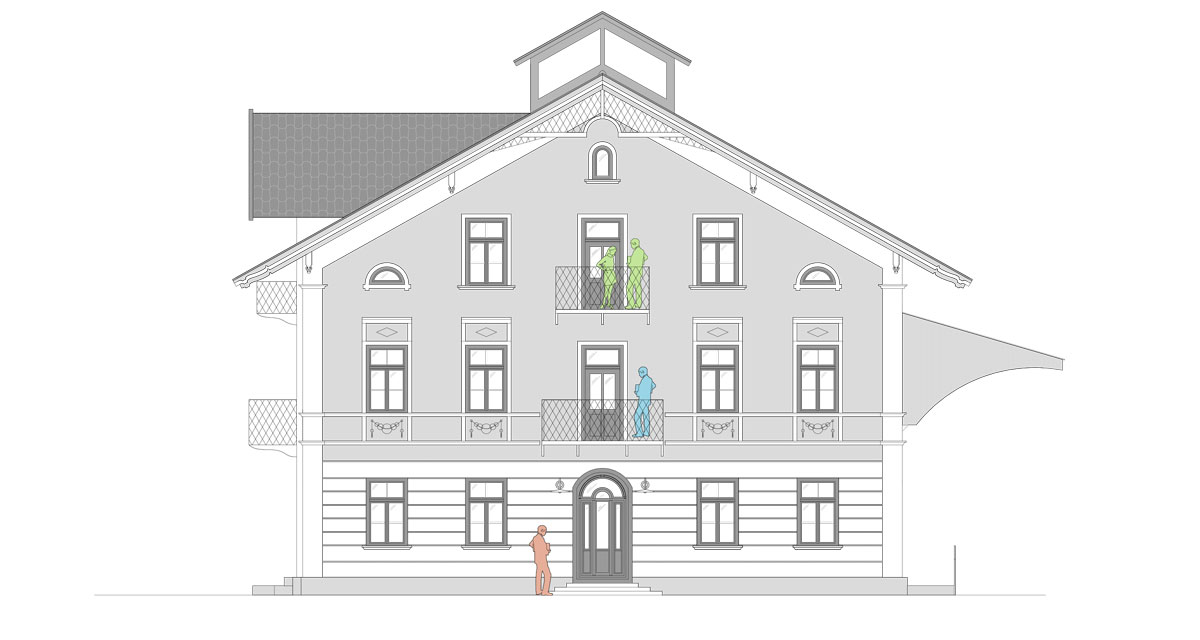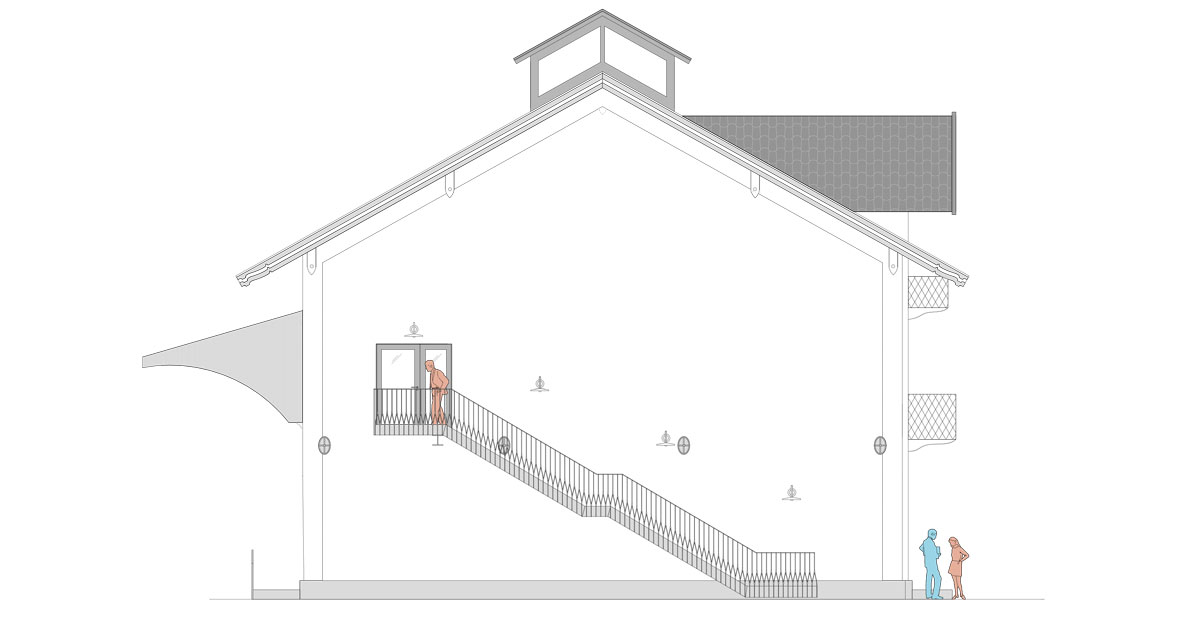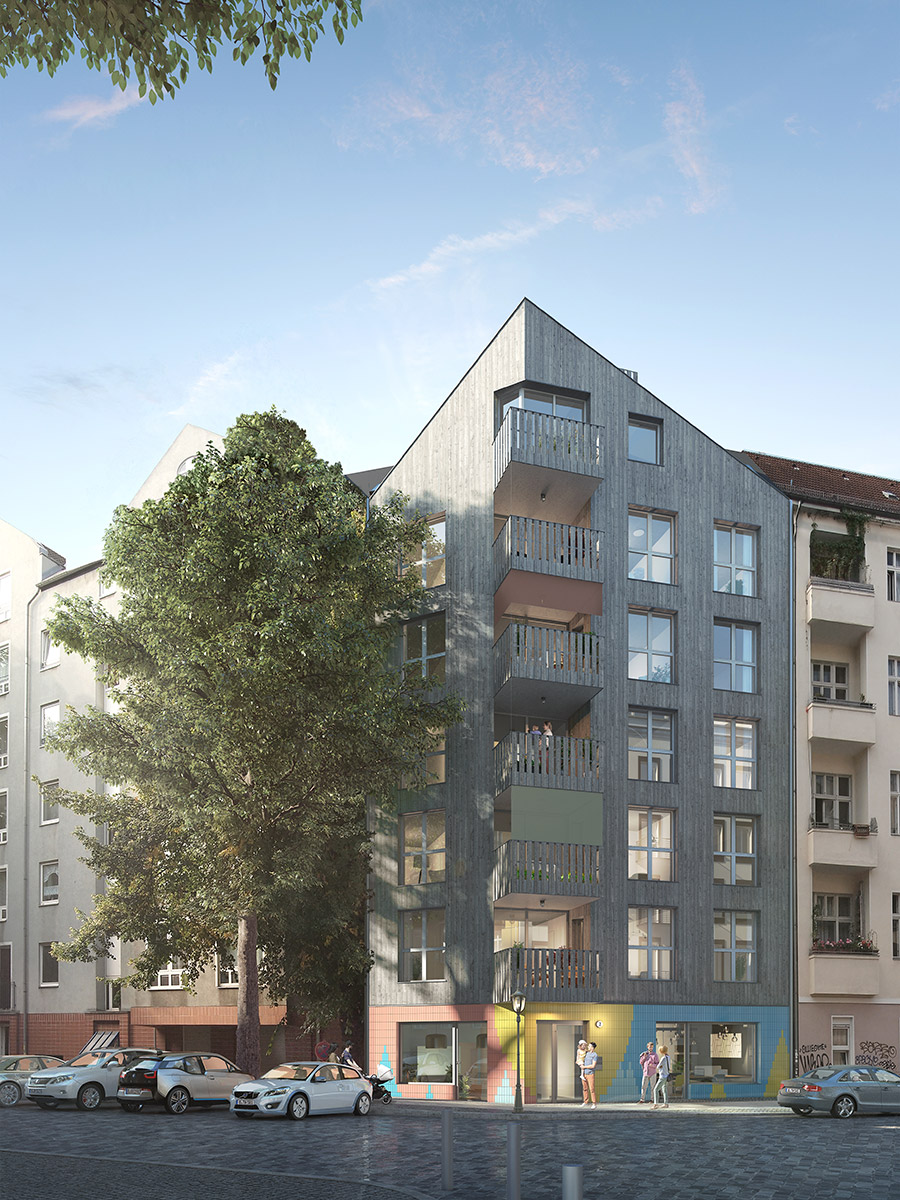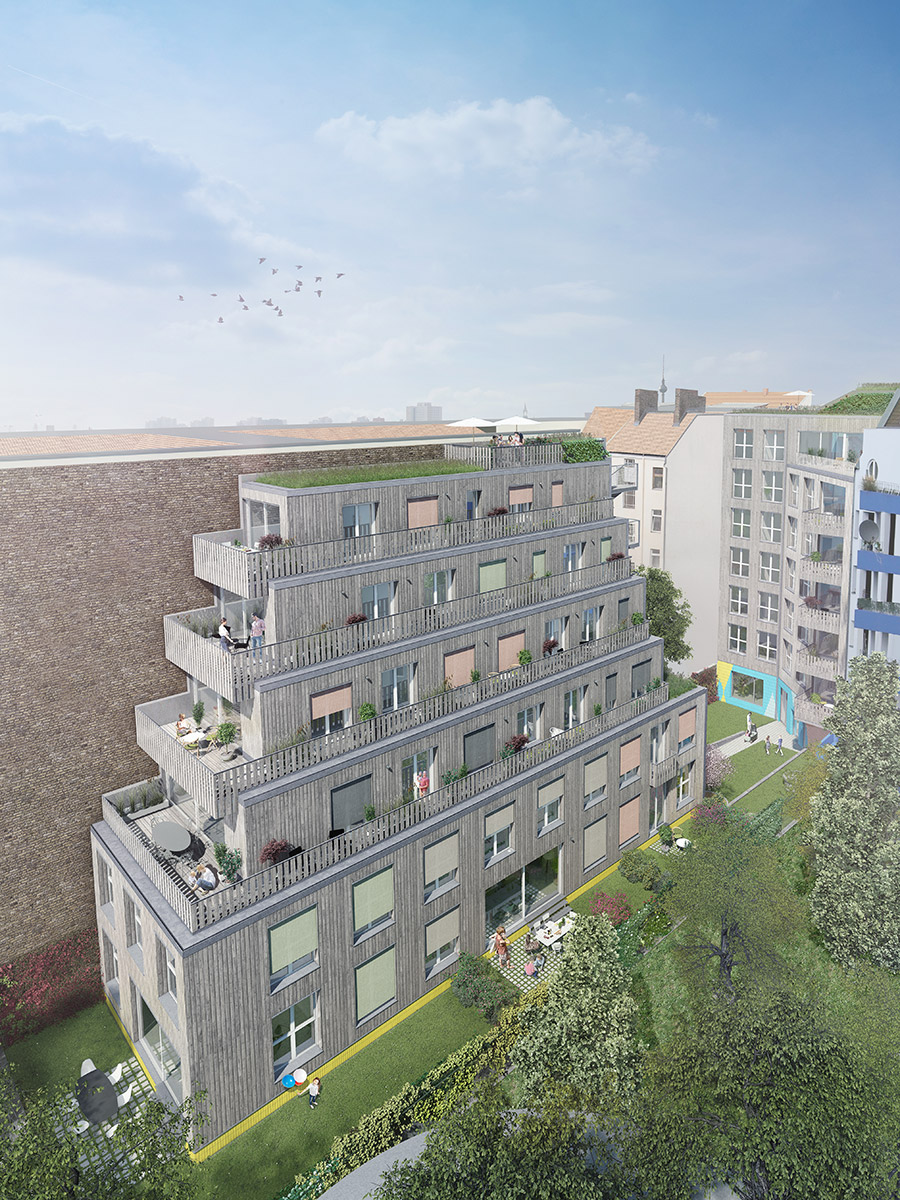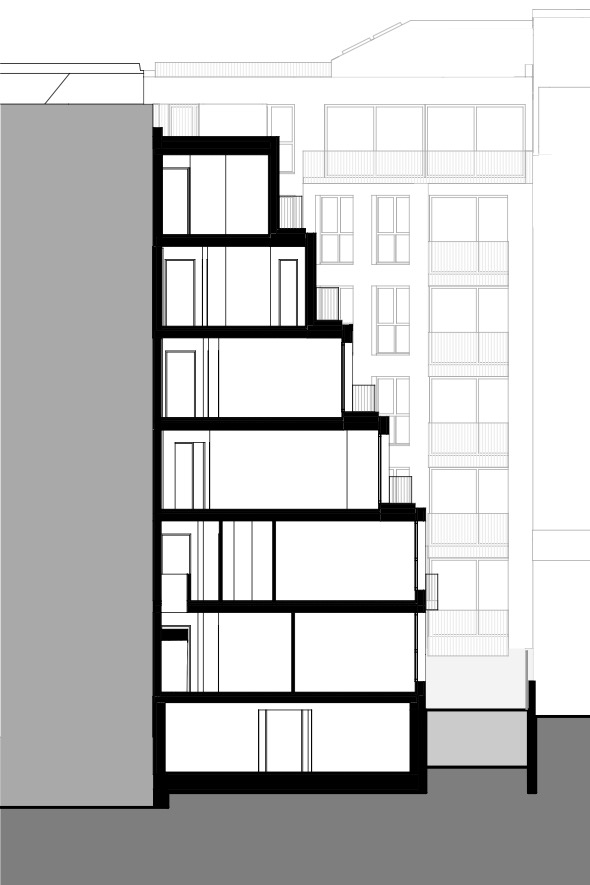22/012
IFUB*
Institut für u. Baukunst
Berlin/Munich
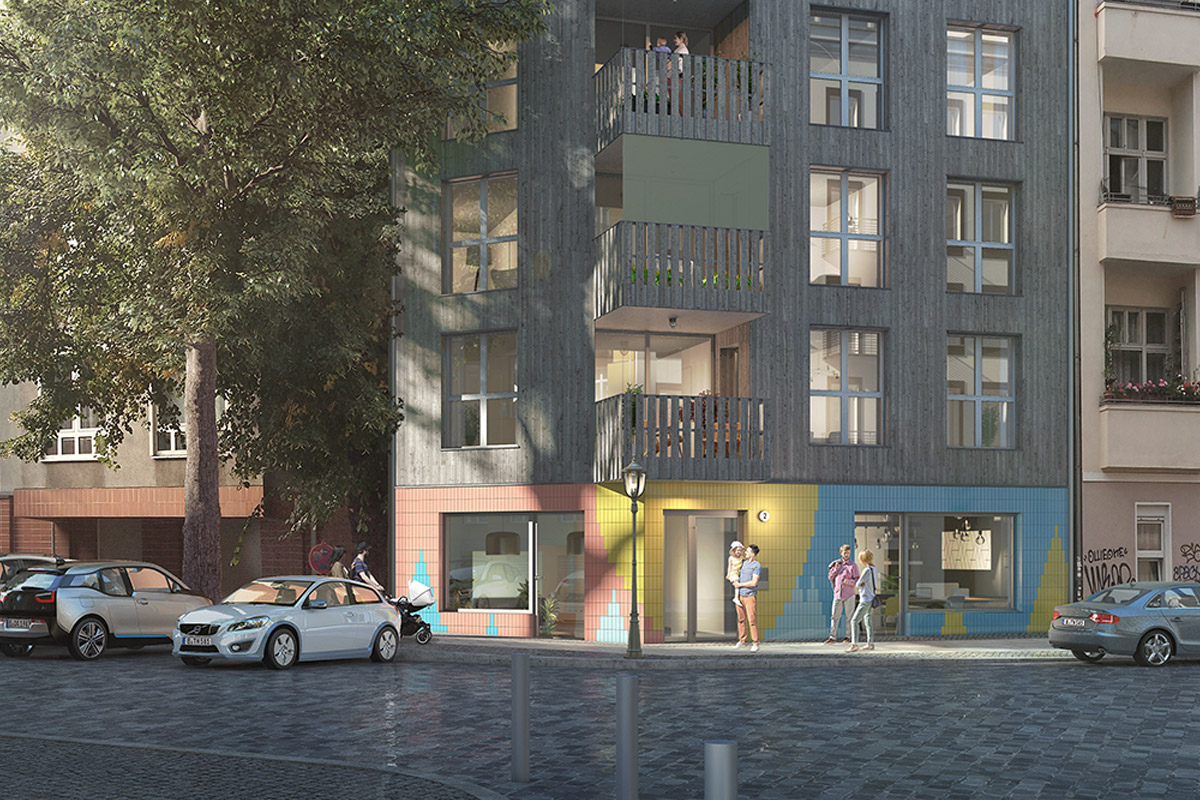
«Look away from money or design – look towards the people.»
«Look away from money or design – look towards the people.»
«Look away from money or design – look towards the people.»
«Look away from money or design – look towards the people.»
«Look away from money or design – look towards the people.»
Please, introduce yourself and your studio…
The IFUB* – short for “Institut für u. Baukunst” – was founded on the 1st of May 2012 by us, Johannes and Bernhard. We are an office of eight (fantastic) people now, with one office in Berlin and one in Munich. We mainly work on housing and office projects but have also been working on public spaces like cafés. We do not only do architecture but also interior architecture (we like the word more than interior design). We think, those two fields shouldn’t be separated from each other in the first place. We especially love doing refurbishment projects, but we have also done new buildings.
If we are asked what kind of architecture we do we usually say we do “architecture and interior architecture for the common good.” But we’ll come to that later in the interview.
We are also often asked about our name. We chose institute to emphasize our collaborative approach to projects, the u. can mean various things like unbelievable, unconventional, urban, etc. whereas „Baukunst“ is just a nicer word for architecture.
How did you find your way into the field of architecture? Why are you fascinated by your work/architecture in general?
We both cannot say that we wanted to become architects since we were kids. We don’t have architects in the close family neither. We kind of accidentally ended up studying architecture, and it ended up not being such a bad choice. The fascinating thing about architecture is the combination of art and technology and also the excitement of creating something so big and long lasting like a building. At the same time architecture also has a physical, visible, touchable result – it’s s not purely theoretical or conceptual.
Architecture also comes with an enormous responsibility as we are influencing the lives of many people. No other fields of design include that to this extent.
What are your experiences founding your own office?
Initially it was just sort of a naive endeavour. We said: let’s try it, or we’ll never do it, or we’ll never know if we could have succeeded.
We met at the Technical University in Munich, did our diploma thesis together and ended up living in the same shared flat in Berlin while working in different offices as architects. We were soon disenchanted by poor working conditions (minimum wages, maximum hours) and the constant fight over money in the projects themselves. In our society money stands above everything else. Above quality, above good design and especially above people. So maybe four or five years before we started, we had already had the idea of the IFUB – but the name back then was Institut für unwirtschaftliches Bauen (Insititute for uneconomical building). We wanted to do stuff without caring about the money. So for fun we printed t-shirts and bags with white colour on white cloth and black colour on black cloth. Totally uneconomical.
In 2012 we were both at the point – now or never – as Bernhard moved back to Munich while Johannes stayed in Berlin. And as we always disliked the surname-surname-architecture naming of offices we fell back to the name IFUB with only minor changes.
It hasn’t been easy to get it all started. We both do not have any wealthy or powerful contacts that would get us into business. We soon also found out that good design doesn’t help you in competitions either. It’s all about who you know or don’t know. So our way was to start with very small projects, we did them as good as possible, we set up a good website and got our work published. And by that we slowly but steadily went from part time IFUB, to full time IFUB, to the first employee in 2017 and to 6 employees in 2022.
Looking back, yes it was and still is challenging. But the biggest challenge is in fact a totally different one. With our work, we want to be part of the change we want to see in the world. Yet still we are supporting a system we do not want to support. Humankind is facing the biggest crisis in its history, yet we all continue to act like before. We are locked up in a system we know is wrong. Infinite growth on a finite planet. Even kids understand this won’t work.
How would you characterize the cities you are currently based at as location for practicing architecture? How is the context Berlin and Munich influencing your projects? What meaning does location have to you overall?
Our offices are situated in two very different cities – Berlin and Munich. Even though very different in their urban and social structure, they both face a similar problem: Space is rare and most gaps have been filled until now. So the few plots still available are very often ridiculously expensive. With prices for real estate so high, and prices for construction work also going through the roof, we are not only struggling to create affordable architecture for everybody. Further, it is hard to construct ecologically or in the sense of common good, as it is usually more expensive in the short term. These rising prices are also widening the gap between rich and poor even further. Even middle class families cannot afford flats anymore.
We always called our design process “contextual design”. Context is elementary. Each of our projects is precisely analyzed, evaluated, and developed individually, based on the building/plot and its surroundings plus our client’s specific needs and criteria.
A bit more interesting is maybe the unusual fact that we started the IFUB* from the beginning in two different cities. Initially it was Johannes in Berlin, Bernhard in Munich. So many years before Covid we were communicating mostly online, having all files online, having the whole office and all projects only on our laptops. For us it was never important where we were, as long as we had fun together, which was and is still quite liberating. It has become a bit more complex and challenging since we have employees, but we try to keep the spirit alive.
What does your desk/working space/office look like at the moment?
We share both of our offices with friends, like graphic designers, photographers, other architects etc. We love the interdisciplinary exchange even though it means it sometimes is a little bit more chaotic. In Munich we use (for ourselves) the clean desk principle with workplaces that are not personalized. All personal stuff goes into private boxes we keep on a shelve in the storage. Berlin works a bit more conventional – we are moving to a new space soon – we will see how we will continue there…
Office Spaces – Munich and Berlin
What is the essence of architecture for you personally/for you as a group?
Architecture and interior architecture is there to serve people. We want to design spaces for happy, healthy users and at the same time keep our environmental impact as low as possible. Something as permanent and influential as architecture should never be junk.
Name your favorite …
Books:
We have a list of books we can recommend but most are non-architecture related. You want to know them all?
Verbietet das Bauen by Daniel Fuhrhop
Death and life of great american cities by Jane Jacobs
Cities for people by Jan Gehl
Change everything. Creating an Economy for the Common Good by C. Felber
Human Kind and Utopia for realists by Rutger Bregman
Donut Economy by Kate Raworth
All you need is less by Niko Paech
Unsere Welt neu denken by Maja Göpel
Capitalism vs. Climate by Naomi Klein
Prosperity without growth by Tim Jackson
Echter Wohlstand by Vivian Dittmar
Führen mit Hirn by Sebastian Purps-Pardigol
Magazines:
Neue Narrative – awesome input and a constant flow of ideas for how we (could) work today.
Building:
Old traditional houses in general – houses that are made from their surroundings and will vanish into the surroundings after their use is over.
All-time favorite due to its light(ness) and beauty: Nordic Pavillion by Sverre Fehn (even though it’s concrete).
Latest for its very clever floorplans and the cooperative ownership – San Riemo in Munich by Summacumfemmer and Juliane Greb.
Mentor/Architect:
We don’t know. We always thought that the influence of single persons on architecture is overrated. Architecture was and is mostly teamwork. Only with a lot of great people working closely together a good project will be the outcome.
Building material:
Anything natural that after it’s used up will just vanish into the landscape.
What needs to change in the field of architecture according to you? How do you imagine the future?
There are a lot of issues that need to be addressed in architecture. But also in many many other fields. We have to get to the root of these problems: Capitalism and the lie of everlasting growth. We need to change this system. We all know now that neither capitalism nor communism is a valid solution for the future, don’t we? But it’s not like those are the only options we have! Both systems are only known for less than 200 years – why do we think there is no better alternative?!
The closest to a new vision, a new concept for a system that we believe could actually work is the ECG, the “Economy for the Common Good (Gemeinwohlökonomie)”. The principle is pretty simple: In almost any constitution in the world it is written that capital shall serve the common good. But we don’t act like that! In capitalism anything serves the capital. So the only thing anyone in politics and media but also society is talking about is the growth of capital. We should have a “commongood-ism” with a focus on human dignity, solidarity and social justice, environmental sustainability, transparency and co-determination!
The basic idea of the ECG is to turn our focus into this direction. Right now, every company or institution or municipality or club has to do a financial balance which is then used to evaluate all of them. That’s why we all focus on the money. Why not ask everybody to also do a common good balance sheet – and use this to evaluate? Use the outcome for the taxing, the placing, the credit granting or other incentives? Suddenly the focus of all companies would change.
The idea of the common good balancing already exists and more than 800 companies worldwide have undergone the process the ECG has developed. We did our common good balancing for the first time last year. It’s a challenging process, but already by just doing it our focus changed completely. Now imagine this would be a matter of course for everybody.
What the outcome would be? Nobody knows. But it is a vision that could be easily implemented, that could bring us a system change without a war or a revolution and along the way solve a lot of the massive problems we are facing today. Isn’t that a great vision?
If there were one skill you could recommend to a young architect to study in depth at architecture school: what would it be and why?
Look away from money or design – look towards the people. The most important part of architecture is not the space, nor the light, nor the facade etc. It is the person that uses and experiences it.
Also: communication skills! Learn how to communicate nonviolent and according to the person opposite. Learn to listen.
Last but not least: read! Reading is a superpower – without it we don’t evolve.
What is your favorite tool to design/create architecture and why?
Still paper and pen are the most powerful tools.
Additional to that we mostly work with SketchUp. It is easy, very quick to try out ideas, and great to guide our clients through the different design phases. It works especially great in the early design phases where a sketch tells much more than a photorealistic rendering.
For the more precise planning we then use ArchiCad. It’s a very powerful program when it comes to details, BIM and such.
What essential actions do we need to take as architects now regarding a more sustainable future for everyone?
We have to start building less. In Germany there would be absolutely no need to construct new buildings. We recommend to read the book of Daniel Fuhrhop – Verbietet das Bauen. It explains the reasons much better than we can do here in short.
But let’s get into some other details: we are pretty annoyed about the focus of the government on energy efficiency. To be precise, in energy efficiency after a building is finished is the only priority. This is wrong in so many aspects.
To get away from this we have developed our own IFUB* handbook with ten parameters for an architecture and interior architecture for the common good. Here we go:
- Don’t build – because construction consumes energy and generates emissions.
- Renovate before building new – because every preserved component is a saved resource and saving of energy and emissions.
- Build smaller/less – because only through sufficiency can we achieve our climate goals.
- Build versatile – because this is how we achieve a variety of uses and thus a longer lifespan.
- Build with and for the people – because first people build houses and then houses build people.
- Build beautiful – because beautiful, timeless architecture is more durable and long-lasting.
- Build energy efficient – because this is an important part in the fight against climate change.
- Build simple – because resource-saving, cycle-friendly buildings, easy to handle, are the best basis for the future
- Build circular – because every house has reached its zenith at some point and should be able to be reused.
- Build material conscious – because only in this way can we make buildings sustainable, ecological, timeless, durable and, in particular, healthy to live in and comfortable. The reuse of old building materials should also be considered.
You can read more about that on our website.
We must admit – we have not always been successful in reaching all those goals. Every time it is a process and a matter of the clients wishes and money. But it helps our efforts a lot, that we have those ten points written down now. So our clients but also ourselves do have them in clear sight all the time.
What person/collective or project do we need to look into right now?
We already told you about the Economy for the Common Good
Also an amazing bunch of the people are PURPOSE
Last but not least – The people fighting for an unconditional basic income in Germany.
Project 1
Beim Fuchs
Unterföhring
2016 – 2020
An ornate, landmark farmhouse - historically protected, in a panoramic location just outside Munich. A new concept to do justice to the building, its history, and its setting. Historical building materials and ecological construction techniques guiding the renovation and restoration, and clients - directly descended from the original contractor and with a special bond to the building - to wholeheartedly take on the challenge. Here, dedication and idealism were required at every turn. After much problem-solving, creative thinking, and countless small and large solutions, the result is clear to see: The Beim Fuchs estate in Unterföhring shines once more.
Fotos: Sorin Morar
Project 2
Baugruppe D2
Berlin
2018 –
Living in Berlin. Between the daily madness of real-estate sharks, big investors, and increasing gentrification, an alternative model— the housing cooperative —has been developing and gaining popularity. The „Baugruppe“ consisting of 15 families, had the good fortune of securing one of the last vacant building plots in the central and sought-after area of Neukölln. The IFUB* were entrusted with the task of creating a well-integrated, ecologically sound urban build that is both modern and welcoming, and incorporates lots of green and communal space in courtyard and roof areas.
Renderings by mojo images Berlin
Website: www.ifub.de
Instagram: @ifub_architecture
Facebook: @ifub.de
Photo Credits: *IFUB / Projekt Beim Fuchs: Sorin Morar
Interview: kntxtr, ah + kb, 05/2022
